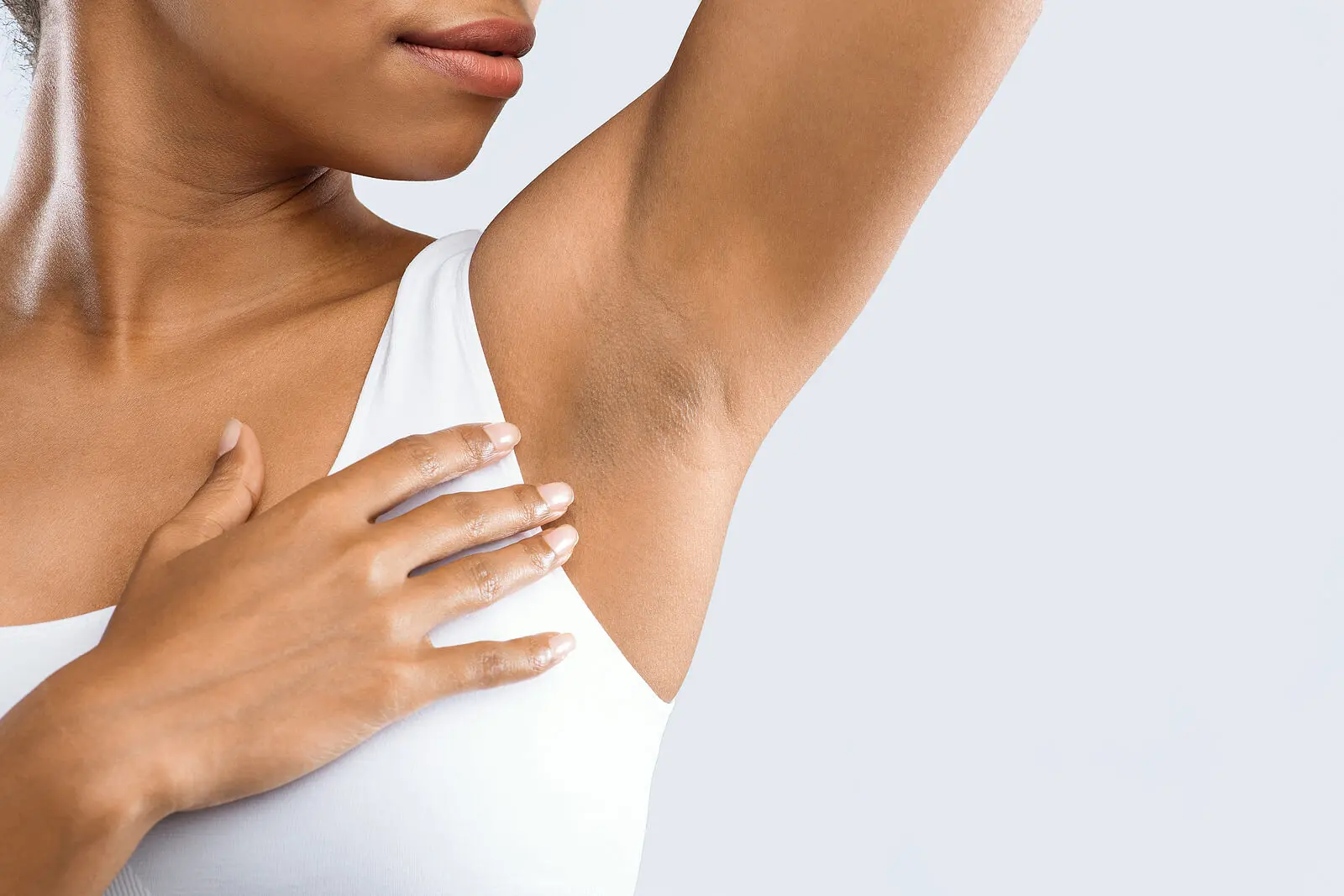15 Tips for Skin Care With Diabetes


Reviewed and approved by the doctor Leonardo Biolatto
Good skin care is required with diabetes, since certain skin conditions may occur along with this disease. The most common are dryness, changes in coloration, and even the appearance of sores and ulcers.
Taking into account that people with this disease have specific needs, it’s advisable to apply certain measures. These include, as we will see later in this article, drying your skin well, avoiding prolonged baths, and avoiding irritating products.
Read on to learn more about skin care with diabetes.
The impact of diabetes on the skin
In diabetes, blood sugar levels are elevated, which translates into a negative impact on the skin, increasing the risk of various skin conditions. This is due to a malfunction of the defense systems, reducing the body’s ability to respond to pathogen attacks.
On the other hand, fungi and bacteria find more food for reproduction when glucose is more available. And since the body seeks to eliminate excess sugar through the urine, this causes a lot of fluid to be lost. Since the skin becomes dehydrated, cracks then develop on the surface, opening the door to more infections.
Common symptoms
Common skin symptoms associated with diabetes include the following:
- The appearance of reddish spots.
- Problems with wound healing.
- Dry and tight skin, often sensitive and fragile.
- Formation of wounds, scabs, and possible ulcers.
- Yellowish skin, more frequent on the palms of the hands and soles of the feet.
- In the absence of healthy collagen networks, the skin tends to harden, acquiring a waxy appearance.
- Due to diabetic neuropathy, there may also be a sensory loss. And because of the lack of sensation, injuries can occur without realizing it.
You may also be interested in reading: A Vegetarian Diet for Patients with Diabetes: Tips for Planning One
Diabetes-related skin conditions
A person with diabetes is at increased risk for skin diseases. Let’s now take a look at what some of these conditions may be.
Acanthosis nigricans
One of the most common is called acanthosis nigricans. This condition is characterized by darkening and thickening of the skin. It occurs particularly in the folds, such as the back of the neck, armpits or even the groin.
According to studies on the subject, acanthosis occurs in about 3 out of 4 people with diabetes. However, it can also occur in people with obesity or hormonal problems or even in reactions to certain medications.

Psoriasis
Similarly, in people with type 2 diabetes, the risk of developing psoriasis increases, and they may present red spots, itching, and flaking. In some cases, the scalp and even the nails are even affected.
Buschke’s scleredema
This is a connective tissue disorder that’s characterized by a thickening of the skin, especially in the upper torso, either the back or neck. Unlike acanthosis, there is no or not as noticeable darkening.
However, when Buschke’s scleredema is severe, it can make mobility difficult. It’s believed to appear more in overweight people.
It can appear in people without diabetes who have had a streptococcal infection.
Diabetic dermopathy
Dermopathy is also quite common, occurring in 33 or 40% of cases in people with type 1 or type 2 diabetes, respectively. In this condition, circular, reddish, or brown, scaly-looking patches appear on the calves.
Diabetic foot ulcers
Because diabetes affects circulation, small wounds sometimes develop into ulcers. They can be common in what’s known as diabetic foot. If they become infected, the risk of necrosis increases.
Xanthelasma
Xanthelasma is a type of lesion caused by fat accumulation. The appearance is yellowish and scaly. It appears on or near the eyelids, as well as on the neck, shoulders, armpits, and other areas of the trunk.
It can be the result of high blood sugar and fat, although it also occurs in people who do not have these factors present. Although it doesn’t constitute a health risk, it does affect the quality of life. Some studies suggest the use of lipid-lowering drugs for its treatment.
Xanthomas
Xanthomas are caused by poor glucose management. They’re bumps of variable tone, ranging from dark yellow or orange to brown or reddish. They cause itching.
They appear more frequently on thighs, buttocks, and areas with folds (elbows or knees). They’re also associated with hypothyroidism, cirrhosis, or pancreatitis.
Acrochordons
This is the name given to certain papillomas that hang from the skin that are soft and flesh-colored. They can appear on the eyelids and other folds (such as the groin, armpits, neck, or breasts).
They are a sign of high blood sugar levels in patients with diabetes. They also occur in people who don’t have diabetes.
Necrobiosis lipoidica
Necrobiosis lipoidica is a rare condition. It’s a granulomatous condition with degenerative connective tissue. About half of the people who present with it are insulin-dependent.
Initially, the lesions are small, firm, rash-like bumps. They then progress to larger, harder, waxy plaques of skin that are bright yellow or brown in color. Although painless, the skin is more prone to infection, and ulceration may occur.
Granuloma annulare
This condition may be a complication of shingles or diabetes. It appears on the hands or forearms. It presents as small, reddish bumps that form a ring (hence the name).
Bacterial infections and mycoses
Bacterial and fungal infections may occur more frequently in people with type 2 diabetes than in the non-diabetic population. Here, we include the following:
- Tinea
- Styes
- Boils
- Candidiasis
- Athlete’s foot
- Lichen planus
- Onychomycosis
Like this article? We think you may also enjoy: Nutrition and Management of Type 2 Diabetes: Recommendations and More
Top tips for skin care in diabetes
Because of all these risks, it’s necessary to take measures for skin care in diabetes. Below, we’ll take a look at some tips in this regard.
1. Avoid taking prolonged showers or baths
Showering excessively or for too long also dries out the skin. This is usually not very good for people with skin sensitivity, including patients with diabetes, as it can remove part of the fatty layer that protects the skin from external pollutants.

2. Bathe your feet daily
Despite the above, it’s necessary to wash your feet daily to keep the skin as clean as possible. As long as it is short baths and dries well, it’s beneficial.
3. Use gel soaps
It’s recommended to avoid using bar soaps. Instead, opt for bath gels.
There are some specially developed for sensitive skin based on natural ingredients such as vegetable glycerin. They also help hydrate and moisturize better.
4. Avoid irritating products
On the other hand, you should also try to use personal hygiene products that don’t dry or irritate the skin. This includes mild, fragrance-free shampoos and creams. You should also avoid aerosols, as well as those containing parabens.
5. Dry your skin well
Once the bath is over, dry your skin very well, especially the folds (armpits, groin, neck). And above all, it’s essential to do it between the toes to avoid possible fungal infections.
It’s also best to use a soft towel, which is dry. If possible, have a separate towel for certain areas.
6. Apply cream daily
When there’s dryness, the propensity for irritation or cracking increases, leading to itching and sores. In order to prevent them, moisturizing creams should be applied for skin care with diabetes.
In this regard, those with plant extracts and those containing vitamin E are recommended, as well as substances that favor the preservation of natural moisture. In this regard, there is the option of ingredients such as jojoba oil.
7. Use talcum powder
To help keep the foot dry and avoid moisture, which could be harmful, it’s recommended to use talcum powder. Ideally, it should be placed inside the shoes and not on the foot so as not to trap moisture.
8. Don’t walk barefoot in public places
In public places, such as swimming pools or gym bathrooms, the propensity to contract infections, such as athlete’s foot, increases. Bathing sandals should be worn when walking in these places.
9. Cut your nails carefully
Extreme precautions should be taken when cutting toenails, without overdoing it, so as not to cause wounds that could be a gateway to infections.
10. Keep an eye on your feet
Among the skin care for diabetes, people should be attentive to their feet and check them daily. This way, they will be able to detect any alteration in time.
11. Avoid scratching your skin
Although it’s true that dry skin causes itching, scratching should be avoided, as this can cause wounds that eventually become infected or worsen, turning into sores. Instead, a cream with glycerin can be applied.
12. Don’t pop blisters
When blisters appear, do not pop them, either using a needle or with your fingernails. The same applies to wound scabs, which should not be picked.
13. Care for wounds
When a wound appears, care should be maintained, applying dressings if necessary. Cuts should be treated immediately, and vigilance should be maintained regarding the progress of healing.
14. Control your blood sugar levels
Your blood sugar levels must be monitored and regulated. This is a vital task, not only in terms of skincare for diabetes, but because of all the negative effects it has.

15. Follow the treatment to the letter
Last but not least, the diet, as well as the medication recommended by the health professional, must be strictly followed. This is the best way to treat the problems, preventing them from appearing.
When to see a doctor
Although some of the symptoms described above are harmless, others can lead to serious complications, such as necrosis requiring amputation. The progression is rapid in patients with hyperglycemia.
To maintain good skincare when you have diabetes, a dermatologist should be consulted if the problems are persistent or if symptoms such as purpura, pain, swelling, redness, or fever are observed.
All cited sources were thoroughly reviewed by our team to ensure their quality, reliability, currency, and validity. The bibliography of this article was considered reliable and of academic or scientific accuracy.
- Crinnion W. Toxic effects of the easily avoidable phthalates and parabens. Altern Med Rev. 2010; 15(3): 190-196.
- Didouche Y, Aksas H. An agrofood waste physicochemical characterization for its valorization. Algerian Journal of Environmental Science and Technology. 2021; 7(4): 2143-2150.
- Duff M, Demidova O, Blackburn S, Shubrook J. Cutaneous manifestations of diabetes mellitus. Clin Diabetes. 2015; 33(1): 40–48.
- Gad H, Roberts A, Hamzi, et al. Jojoba oil: an updated comprehensive review on chemistry. Pharmaceutical uses and toxicity. Polymers. 2021; 13: 1711. https://doi.org/10.3390/polym13111711
- Gubelin W, de la Parra R, Giesen F. Micosis superficiales. Revista Médica Clínica Las Condes. 2011; 22(6): 804-812.
- Laftah Z, Al-Niaimi F. Xanthelasma: An Update on Treatment Modalities. J Cutan Aesthet Surg. 2018; 11(1):1-6.
- Pereira N, Suh Hyunsuk P, Hong Joon P. Úlceras del pie diabético: importancia del manejo multidisciplinario y salvataje microquirúrgico de la extremidad. Rev Chil Cir. 2018; 70(6): 535-543.
- Peyrí J, Moreno A, Marcoval J. Necrobiosis lipoidica. Seminars in Cutaneous Medicine and Surgery. 2007; 26(2): 87-89.
- Pitarch G, Torrijos A, Martínez-Aparicio A, Vilata J, Fortea J. Escleredema de Buschke asociado a diabetes mellitus. Estudio de cuatro casos. Actas Dermo-Sifiliográficas. 2005; 96 (1): 46-49.
- Vera Estévez A. ¿Dermopatía diabética? Folia Dermatológica Cubana. 2021; 15(1): e259.
- Wu L, Norman G, Dumville J, O’Meara S, Bell-Syer S. Dressings for treating foot ulcers in people with diabetes: an overview of systematic reviews. Cochrane Database Syst Rev. 2015; 7: doi 10.1002/14651858.CD010471.pub2.
This text is provided for informational purposes only and does not replace consultation with a professional. If in doubt, consult your specialist.








